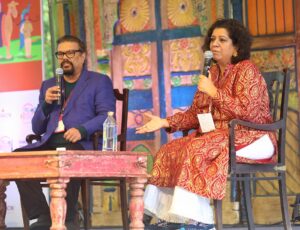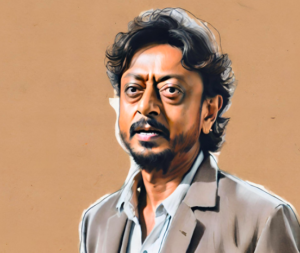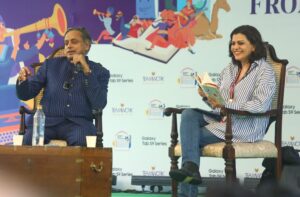Is Bengaluru Jaipur’s literary twin? Here’s a vis-a-vis account
5 min read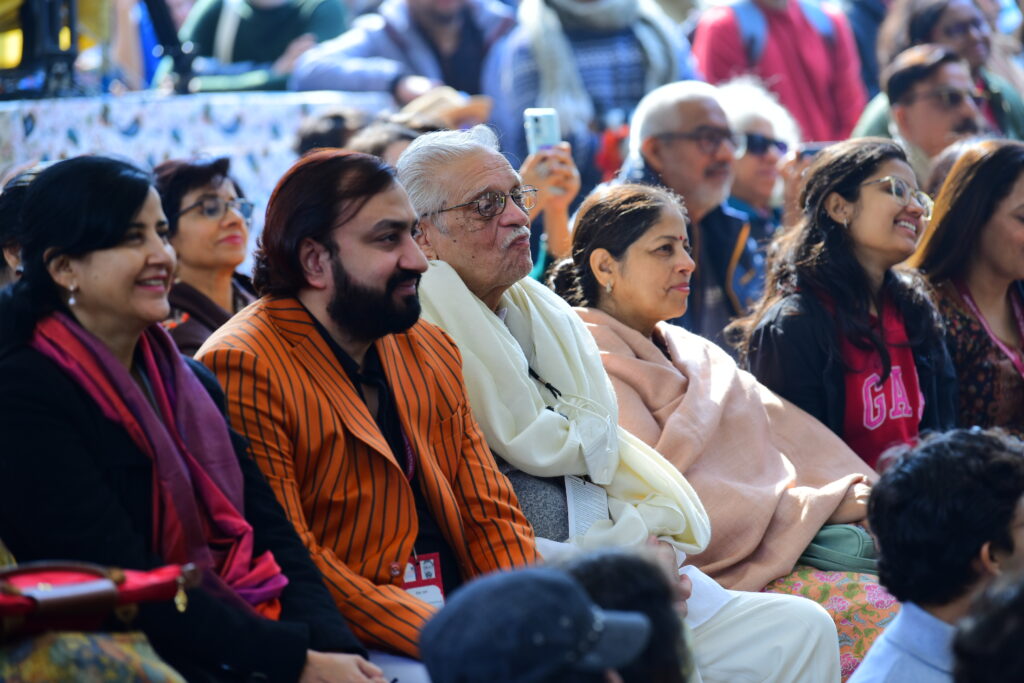
Gulzar in the audience at Jaipur Literature Festival 2023. The festival is being held from February 1-4 2024 at Clarks Amer
My earliest memories of the Jaipur Literature Festival (JLF) go back to the days of my reporting where I would be a part of a frenzied newsroom on the eve of the annual event. The JLF has since come to be associated with the grandeur, international appeal, and historic charm, some of which has without doubt rubbed off of Jaipur the city that has been hosting this ambitious event for 17 years in a row now.
The contrast between the two festivals is striking — the historical charm of Jaipur versus the dynamic, contemporary vibe of Bangalore. JLF is humongous like a mela, where people come for a darshan of their favourite idol. The Bangalore Lit Fest on the other hand has its own unique character largely modelled on the hyperactive yet smaller and cosier settings compared to the one in Jaipur where the pace is more laidback and contrastingly huge.
JLF Vs BLF
JLF, in fact, triggered a spawning of literary events across India, Bengaluru as a host to the eponymous festival taking after it and becoming a prominent calendar event. For me, however, JLF appeals to me more than the Bangalore Literature Festival (BLF). The festival in Jaipur which now unfolds against the picturesque backdrop of Hotel Clarks Amer, was previously hosted by the Diggi Palace, a heritage hotel. The historic backdrop and the vibrant culture of the city add a unique dimension to the overall ambiance of JLF, the regal surroundings creating an atmosphere that truly resonates with the essence of the festival that has become a niche event in the literary circles.
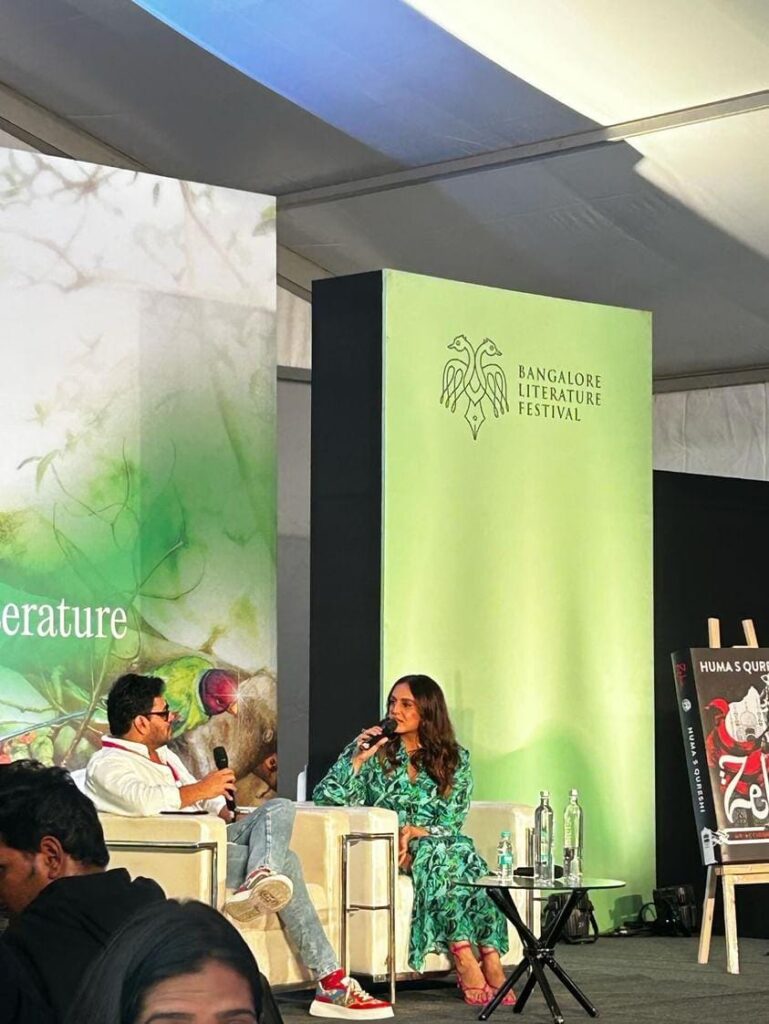
The Bangalore Lit Fest on the other hand has its own unique character largely modelled on the hyperactive yet smaller and cosier settings compared to the one in Jaipur where the pace is more laidback and contrastingly huge. Held at The Lalit, Ashok, the BLF holds a special place in my heart for its emphasis on community, local literature, and an intimate engagement with authors. Despite its smaller scale, the BLF is remarkably well-organised, crafting an ambiance that goes beyond the grandeur of JLF. Its intimate settings foster an environment of discussion that does not border on the hyperbole and the raucous engagement in Jaipur. The setting in Bengaluru promotes meaningful connections and enriching experiences, making the festival a truly special and personal affair.
As a person who has the unique distinction of savouring the experience in both festivals, I can say that each of them unfolds in its own distinct way shaped by their settings, scale, and cultural contexts.
The backdrop
The contrast between the two festivals is striking — the historical charm of Jaipur versus the dynamic, contemporary vibe of Bangalore. Each setting brings a unique flavour to the festival, making the experience personal and memorable in its own ways. The city of Bengaluru hits you like a blitzkrieg on the weekends where the traffic struggles to keep pace with the fast life of the Bangaloreans. In Jaipur, despite being calmer, the venue itself has the same vibe as the Bengaluru roads.
Scale and Attendance
JLF attracts a massive international audience, including renowned authors, thinkers, and literary enthusiasts from around the world. This year, a staggering 4 lakh visitors are expected to participate in 238 sessions spread over the 5 days of the festival. In my opinion, the festival has also gained global recognition for its diverse participation, and accessibility to as many as 4 dozen languages transforming it into one of the largest literature festivals globally. The sheer scale of the event sets it apart, making it a cultural phenomenon.
BLF, on the other hand, emphasizes more on the local and regional literature, providing a platform for emerging writers and building a sense of community. However, at the end of the day, it’s the celebration of the diversity of Indian languages and literature for me that makes both the festivals unique in their own way.
Programming and Panels
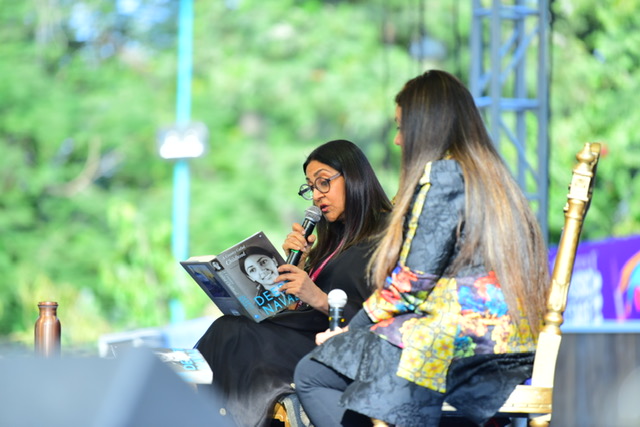
JLF offers a diverse range of sessions covering literature, politics, history, and more. The festival explores various genres and topics, providing a comprehensive experience for attendees. It often features well-known international and national personalities, including celebrated authors, politicians, and cultural figures. This star-studded lineup contributes to the festival’s allure. From Shashi Tharoor to Rupi Kaur and Gulzar to Salman Rushdie, it’s been a delight to attend their sessions.
Being on a more intimate side, BLF often includes interactive workshops that encourage direct engagement between authors and the audience. This is something that truly patronises writing and learning. Some of the best sessions that I’ve been to at BLF have been of Sudha Murthy, Prahlad Kakar, Amish Tripathi and Kanan Gill. It was one-of-a-kind when I saw the pavilion flooding with hooting and cheering as Kanan Gill started his session. He has a session in JLF that kicks off tomorrow.
Specifically catering to kids, BLF also boasts a dedicated Kids Pavilion comprising four distinct areas, adjoining the main pavilions. It’s a delight to watch the children treated to the magic of storytelling by child authors, interactive Tinkle centers, and enchanting activities designed to spark their imagination.
Cultural Integration

Both JLF and BLF go beyond literature, incorporating artistic performances, music, and cultural displays. Throughout the day, we can immerse ourselves in a series of engaging talks, each unveiling the rich narratives of new books and fostering insightful discussions. I find it more mesmerizing as the day progresses, as both the festivals take on a melodic and vibrant note with a musical and cultural segment that enchants the senses. The crescendo building towards an evening of artistic expression provides a fitting conclusion to a day of intellectual stimulation.
Given Bangalore’s status as India’s IT hub, BLF also incorporates themes related to technology, and innovation, and comes off as an intersection of literature with the digital age. It actively engages with the youth through targeted programming, encouraging a new generation of readers and writers.
Inclusivity
Both JLF and BLF are known to have accessible discussions. I’ve witnessed BLF strive to create an inclusive atmosphere where literature is accessible to people from all walks of life. The festival aims to bridge the gap between established and emerging voices. On the other hand, JLF also organises the Writers’ Ball which serves as a delightful conclusion to the literary extravaganza, offering a unique blend of intellectual discourse and social engagement. Held as a glamorous soirée, the Writers’ Ball brings together acclaimed authors, literary enthusiasts, and cultural connoisseurs for an evening of camaraderie and revelry.
JLF and BLF might be poles apart from one another as literary events but the undercurrent of free speech and thought incentivises reading and writing, shaping the minds of generations to come.

